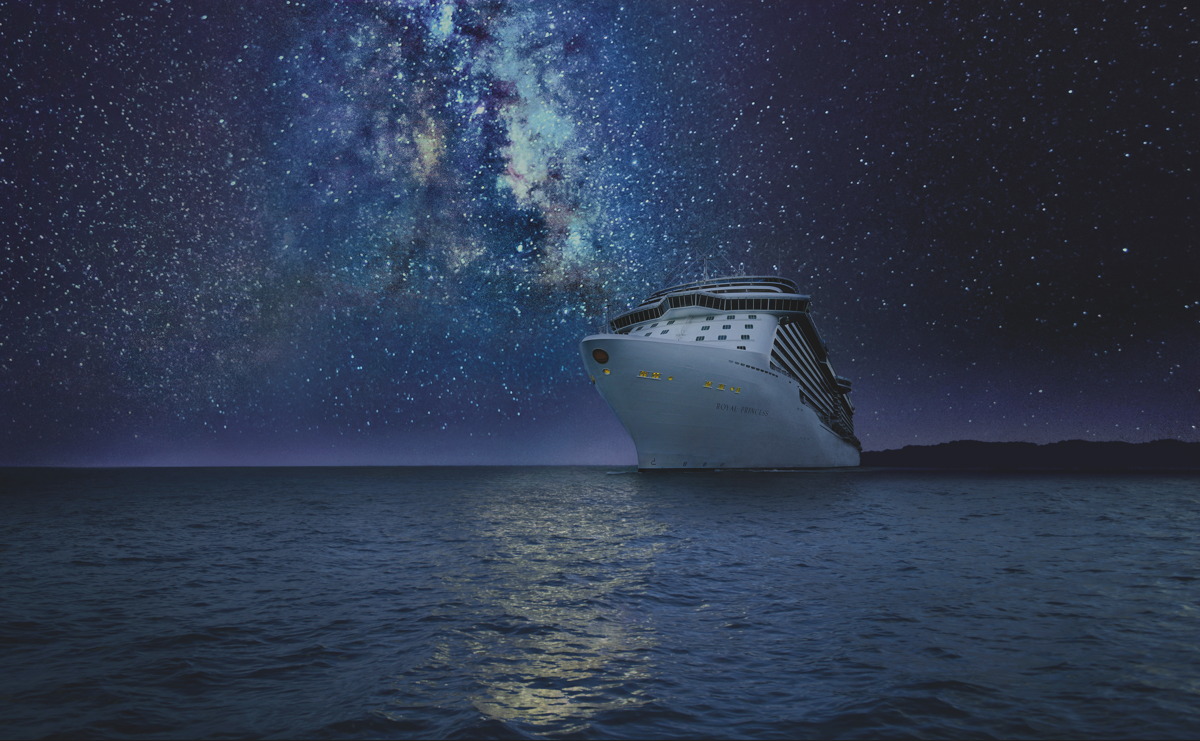Star Ships: New Science Cruises Offer Pristine Cosmic Views

A new line of science-themed cruises lets passengers stargaze from the open ocean, a unique location far away from city lights.
Princes Cruises and Discovery Channel have created a line of science-themed cruises called "Discovery at Sea." The excursions feature activities like diving with sharks, spending time with exotic wildlife, looking at auroras and stargazing.
Viewing the night sky from a location far away from city lights can be a magical experience, but it usually requires traveling to very remote locations (which, for some people, is part of the fun). But stargazing on a cruise ship is unique, because the vessel can travel to locations completely devoid of light pollution, and yet viewers are never more than a few steps away from the ship's accommodations. [Stargazing Tips for Amateur Astronomers]
The stargazing sessions are held on "sea nights" when the ship is far from a port. An onboard "Stargazing Specialist" leads the sessions, pointing out constellations and cosmic phenomena, and answering questions.
The program was made in part with astrophysicist Hakeem Oluseyi, an associate professor of physics at the Florida Institute of Technology and a visiting professor of physics at the Massachusetts Institute of Technology. Oluseyi hosts Science Channel's "Outrageous Acts of Science" TV show.
For the cruise program, he helped develop the "tour of the sky" that is presented to passengers, he told Space.com. In addition, he recorded a series of exclusive video talks about various astrophysics topics that are available for passengers to watch in their rooms.
At a promotional event for the new cruise line held in New York City, Oluseyi told Space.com that a cruise provided the opportunity to see parts of the sky or cosmic features that might not be visible from the passenger's home location. This includes auroras, which are sometimes visible from the Alaska tours.
Get the Space.com Newsletter
Breaking space news, the latest updates on rocket launches, skywatching events and more!
"The other thing you can get from a cruise is access to both hemispheres," Oluseyi told Space.com. "The night sky is amazing no matter where you are in the world, but what's really cool is that it changes from place to place."
In the Southern Hemisphere, the band of the Milky Way is straight overhead, rather than slightly off to the side, as it is in the Northern Hemisphere. So viewers from the northern half of the world can see "star clusters and nebula that you wouldn't normally be able to see," he said.
Stargazing nights are available on all Discovery at Sea cruises. More information is available at the program's website.
Follow Calla Cofield @callacofield. Follow us @Spacedotcom, Facebook and Google+. Original article on Space.com.
Join our Space Forums to keep talking space on the latest missions, night sky and more! And if you have a news tip, correction or comment, let us know at: community@space.com.

Space.com is the premier source of space exploration, innovation and astronomy news, chronicling (and celebrating) humanity's ongoing expansion across the final frontier. Originally founded in 1999, Space.com is, and always has been, the passion of writers and editors who are space fans and also trained journalists. Our current news team consists of Editor-in-Chief Tariq Malik; Editor Hanneke Weitering, Senior Space Writer Mike Wall; Senior Writer Meghan Bartels; Senior Writer Chelsea Gohd, Senior Writer Tereza Pultarova and Staff Writer Alexander Cox, focusing on e-commerce. Senior Producer Steve Spaleta oversees our space videos, with Diana Whitcroft as our Social Media Editor.